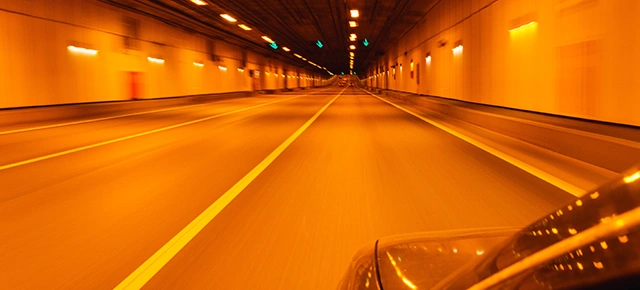


Tunnel lighting might seem like an afterthought as we drive through these underground passages, but the science and thought behind its installation are far from trivial. These lights aren't just about illuminating a gloomy stretch; they're strategically designed to ensure safety, visibility, and driver comfort.
Let's delve into the science behind installing tunnel lighting and how it makes those dimly lit journeys much safer. Tunnel lighting isn't a one-size-fits-all deal. It's a delicate balance of art and science that aims to tackle the unique challenges posed by tunnels. Unlike open roads, tunnels are confined spaces with limited natural light sources. This is where artificial lighting steps in. It ensures drivers can clearly see the road ahead without being blinded by sudden changes in brightness.
Have you ever noticed how, when entering a tunnel, your eyes take a second to adjust to the dimmer light? Tunnel designers are well aware of this phenomenon. One of the primary goals of tunnel lighting is to maintain a uniform illumination level throughout the tunnel's length. Sudden changes in brightness can dazzle drivers and make it difficult to adapt to the conditions. Engineers meticulously calculate the placement and intensity of lights to prevent any unsettling feelings a driver can experience otherwise.
Glare is the nemesis of safe driving, and tunnels can be breeding grounds for it. The sudden contrast can create a blinding glare as sunlight transitions to the tunnel's artificial lights. Tunnel lighting designers employ shields and diffusers to soften this transition, ensuring a smooth visual shift and reducing the risk of temporary blindness.
Tunnel lighting doesn't have a fixed intensity; it adapts to the changing external lighting conditions. The lights gradually become brighter as you enter a tunnel until your eyes fully adjust. Then, as you approach the exit, the lighting intensity decreases to prepare you for the brighter external light again. This adaptation is crucial for preventing discomfort and maintaining optimal visibility.
Driving through a tunnel can be unnerving, especially for those prone to claustrophobia. Thoughtful tunnel lighting doesn't just focus on the road but also considers the psychological impact on drivers. Tunnel engineers understand that driving through enclosed spaces can be unsettling. They use warm lighting tones that evoke coziness, create a sense of space by illuminating walls and ceilings, and employ gradual lighting transitions to mimic natural dusk, inducing calm. They eliminate flickers and shadows that trigger unease and even incorporate artistic elements to engage and uplift drivers. This careful consideration of human emotions turns simple tunnels into reassuring passages that prioritize your mental comfort alongside your physical safety.
Tunnels are unique in that they're enclosed spaces with limited escape routes. In emergencies, visibility becomes a lifeline. Tunnel lighting systems are designed to switch to high-intensity lighting during emergencies, aiding evacuation efforts and helping emergency responders navigate potential chaos.
Considering the inaccessible nature of tunnel lighting, maintenance is a significant factor. Engineers often opt for durable lighting solutions with longer lifespans to mitigate this challenge. LED lights, for instance, are preferred due to their energy efficiency, durability, and ability to maintain consistent brightness over time.
In essence, tunnel lighting is a multidimensional puzzle that integrates various design, engineering, and psychological aspects. It combines uniformity, glare reduction, adaptation, emergency readiness, and driver comfort. As you navigate these underground passages, remember the science at play, ensuring each journey is as safe and pleasant as possible.
The next time those tunnel lights guide you, appreciate the thoughtfulness that goes into making your commute efficient and secure!



